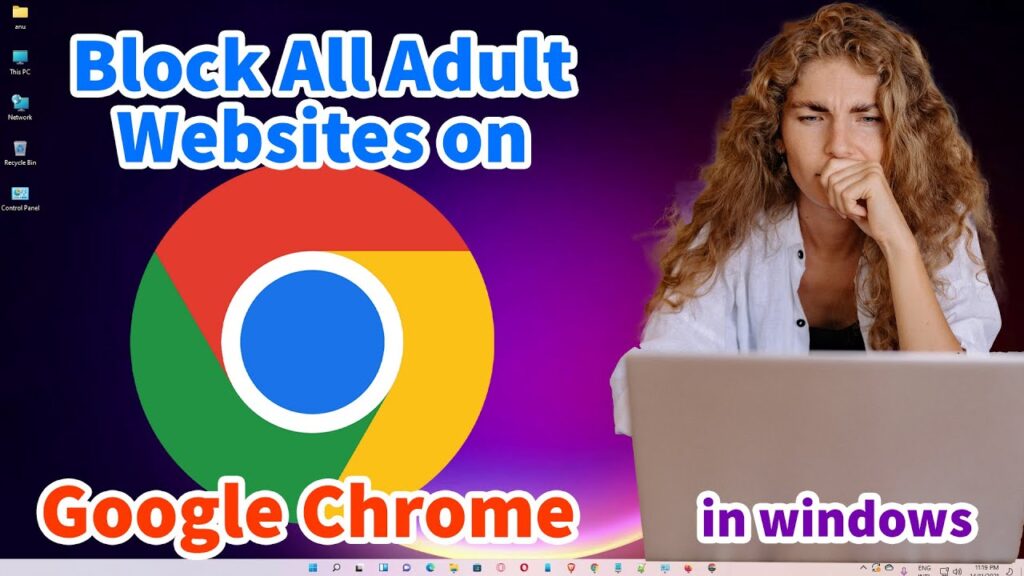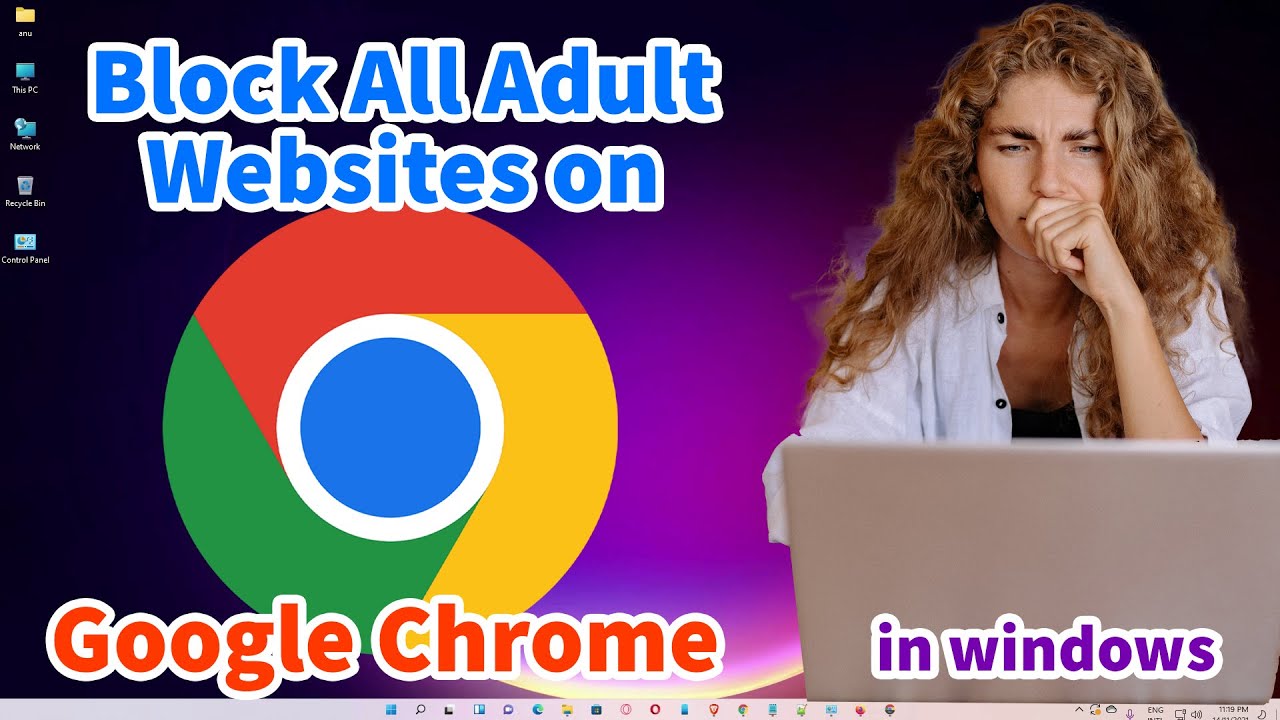
How to Block Porn on Google: A Comprehensive Guide
In today’s digital age, safeguarding ourselves and our families from unwanted content, particularly pornography, is a growing concern. Google, as the dominant search engine, offers several tools and methods to help users filter and block porn on Google. This comprehensive guide will explore various approaches to effectively manage and restrict access to explicit material across different devices and platforms.
The need to block porn on Google stems from various factors, including protecting children, maintaining a healthy mental environment, and fostering responsible internet usage. Whether you’re a parent concerned about your child’s online safety or an individual seeking to minimize exposure to explicit content, understanding how to implement these safeguards is crucial.
Understanding the Risks and Benefits of Blocking Porn
Before delving into the methods of blocking porn on Google, it’s important to understand why this is a necessary step for many. The easy accessibility of pornography can lead to various negative consequences, especially for young and impressionable minds. These include distorted views of sex and relationships, addiction, and mental health issues. By proactively blocking porn on Google, we can create a safer and more conducive online environment.
On the other hand, restricting access can foster open communication about responsible digital citizenship within families. It encourages critical thinking about online content and promotes a healthier relationship with technology. Implementing these measures isn’t about censorship; it’s about creating boundaries that align with personal or family values.
Methods to Block Porn on Google
Several methods can be employed to block porn on Google. These range from built-in features within Google’s services to third-party apps and browser extensions. Let’s explore these options in detail:
Using Google SafeSearch
Google SafeSearch is a built-in filter that aims to exclude explicit results from your search queries. It’s a simple yet effective way to block porn on Google, although it’s not foolproof. Here’s how to enable it:
- Open Google Settings: Go to Google.com in your browser and click on “Settings” at the bottom right corner.
- Choose Search Settings: Select “Search settings” from the menu.
- Activate SafeSearch: Under the “SafeSearch filters” section, check the box next to “Turn on SafeSearch.”
- Lock SafeSearch (Optional): If you want to prevent others from disabling SafeSearch, click “Lock SafeSearch.” You’ll need a Google account to lock it.
- Save Changes: Scroll to the bottom of the page and click “Save.”
SafeSearch filters out explicit images, videos, and websites from Google Search results. While it’s not 100% accurate, it significantly reduces the likelihood of encountering unwanted content. Remember that SafeSearch only affects Google Search results and doesn’t block porn on Google Chrome or other browsers directly.
Utilizing Google Family Link
For parents, Google Family Link is a powerful tool to monitor and manage their children’s online activity, including the ability to block porn on Google. Family Link allows you to set screen time limits, approve or block app downloads, and filter content across Google services. Here’s how to use it:
- Download Google Family Link: Download the Google Family Link app on both your device (as the parent) and your child’s device.
- Create a Google Account for Your Child: If your child doesn’t have a Google account, create one for them through the Family Link app.
- Link the Accounts: Follow the instructions in the app to link your parent account to your child’s account.
- Set Content Restrictions: Within the Family Link app, you can set content restrictions for Google Search, YouTube, and Google Play. For Google Search, enable SafeSearch. For YouTube, you can choose between “Explore” (which filters content for ages 9+) or “Most of YouTube” (which filters content for ages 13+).
- Manage App Downloads: You can approve or block app downloads from the Google Play Store, preventing your child from installing apps that may contain inappropriate content.
Google Family Link provides a comprehensive suite of parental controls to help block porn on Google and other platforms. It also allows you to track your child’s location and set bedtime hours, promoting responsible technology usage.
Employing Browser Extensions and Third-Party Apps
Several browser extensions and third-party apps offer more advanced features for blocking porn on Google and other websites. These tools often use sophisticated algorithms and content filtering to identify and block explicit material.
Some popular options include:
- BlockSite: A browser extension that allows you to block specific websites or categories of websites, including pornographic sites.
- Freedom: A productivity app that blocks distracting websites and apps across all your devices, including those containing explicit content.
- Qustodio: A parental control app that offers comprehensive features, including web filtering, screen time management, and activity monitoring.
- Net Nanny: Another robust parental control app with web filtering, social media monitoring, and location tracking capabilities.
These tools typically offer customizable settings, allowing you to tailor the level of filtering to your specific needs. They can also provide reports on browsing activity, giving you insights into potential risks and areas of concern. When choosing a browser extension or app, consider its features, user reviews, and privacy policy.
Configuring Router-Level Filtering
For a more comprehensive approach, you can configure router-level filtering to block porn on Google across your entire home network. This involves setting up content filters directly on your router, which will apply to all devices connected to your Wi-Fi network.
Many modern routers offer built-in parental control features that allow you to block specific websites or categories of websites. Here’s a general overview of the process:
- Access Your Router’s Settings: Open a web browser and enter your router’s IP address (usually 192.168.1.1 or 192.168.0.1) in the address bar. You’ll need to enter your router’s username and password to access the settings.
- Navigate to Parental Control Settings: Look for a section labeled “Parental Controls,” “Web Filtering,” or something similar. The exact location will vary depending on your router’s manufacturer.
- Add Websites to Block: Add specific websites or categories of websites (such as pornography) to the block list.
- Save Changes: Save the changes to your router’s settings.
Some routers also offer more advanced features, such as time-based filtering (allowing you to block content during specific hours) and user-specific filtering (allowing you to set different restrictions for different devices). Router-level filtering can be an effective way to block porn on Google and other unwanted content across your entire network.
Bypassing Blocking Methods: What to Watch Out For
It’s important to acknowledge that no blocking method is foolproof. Tech-savvy individuals may find ways to bypass these safeguards, such as using VPNs (Virtual Private Networks) or proxy servers to mask their IP address and access blocked content. It’s crucial to be aware of these potential loopholes and take steps to address them.
Here are some strategies to consider:
- Educate Users About the Risks of Bypassing Filters: Open communication about the dangers of accessing explicit content and the importance of responsible internet usage is key.
- Monitor Network Activity: Regularly monitor your network activity to identify any suspicious behavior, such as the use of VPNs or proxy servers.
- Use Advanced Filtering Tools: Consider using more advanced filtering tools that can detect and block VPNs and proxy servers.
- Keep Software Updated: Regularly update your operating systems, browsers, and security software to patch vulnerabilities that could be exploited to bypass filters.
Staying informed about the latest techniques for bypassing blocking methods is essential for maintaining effective safeguards.
The Importance of Open Communication
While technical solutions are important, they are only one piece of the puzzle. Open and honest communication about responsible internet usage, healthy relationships, and the dangers of pornography is crucial for creating a safe and supportive environment. Encourage open dialogue with children and teenagers about their online experiences and provide them with the resources and support they need to make informed decisions.
This includes discussing the potential consequences of viewing pornography, such as distorted views of sex and relationships, addiction, and mental health issues. It also involves teaching them critical thinking skills to evaluate online content and identify misinformation. [See also: Digital Literacy for Teens].
Conclusion: Taking Control of Your Online Environment
Blocking porn on Google is a proactive step towards creating a safer and more responsible online environment. By utilizing the various methods outlined in this guide, including Google SafeSearch, Google Family Link, browser extensions, and router-level filtering, you can effectively manage and restrict access to explicit content. Remember that technical solutions are most effective when combined with open communication, education, and ongoing monitoring. Taking control of your online environment empowers you to protect yourself and your loved ones from the potential harms of pornography and promote responsible technology usage.
Ultimately, the goal is to foster a healthy and balanced relationship with technology, where users are empowered to make informed choices and navigate the digital world safely and responsibly. By implementing these strategies, you can create a more positive and supportive online environment for yourself and your family.

